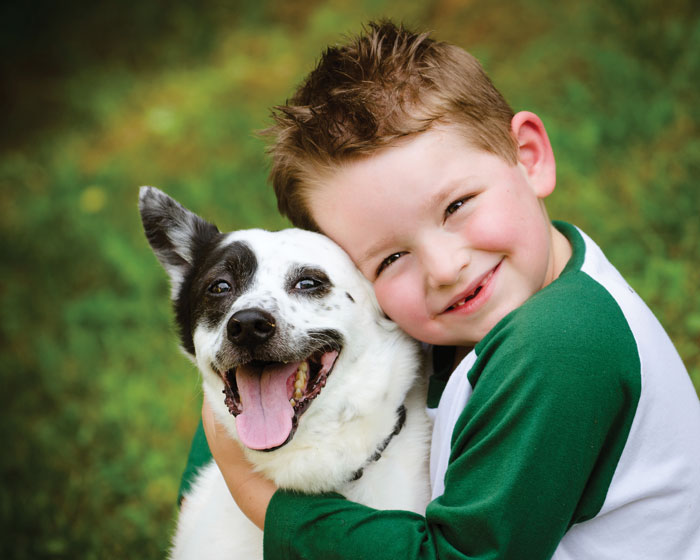Pet Project
Choosing the Right Pet for Your Family
By Malia Jacobson

Are your kids clamoring for a pet? Saying yes may be smart. Research overwhelmingly shows that owning and caring for pets can benefit a child’s self-esteem and self-confidence and can encourage compassion and empathy. Read on for pointers on picking the best pet for your family.
EARLY YEARS 0-5
Pet pals
Adding a new pet to a home already occupied by a baby or toddler can be a challenge; when considering which type of animal to get, keep your family’s lifestyle and your baby’s developmental stage in mind. A tail-pulling toddler might be better off with a low-maintenance goldfish or a cat than a boisterous puppy. But some parents find that a high-energy puppy or kitten fits right in with a young family; young children can keep up with a playful pup or kitten and parents of babies are already used to getting up at night and cleaning up messes. “Puppies take work, if you are going to add a new addition, make sure the house is ready for noisy nights, and a little bit of chaos for the first few weeks,” says dog trainer Jason Troy.
ELEMENTARY YEARS 6-12
Pick of the litter
Ready to take the plunge and get a dog for your school-age child? Ask around for guidance on the best breeds for families. Expert dog trainer Joel Silverman, former Animal Planet host and author of Bond With Your Heart, Train With Your Brain: Techniques for Training and Motivating Humans and Other Animals recommends against dogs with a strong prey drive, such as terriers, for families with young children; though these dogs can make wonderful pets, they may react negatively to the noisy, unpredictable nature of a child. “Dogs with a strong prey drive are often quick to react to the sudden movements and may chase or nip in these situations,” he notes. Retrievers, retriever mixes, and other notoriously mellow breeds are known to make great family pets, he says. Selecting a rescue dog? Reach out to a pro beforehand; trainer Jason Troy consults with families prior to bringing their rescue dog home to help ease the transition from shelter to forever home.
TEEN YEARS 13-18
Separation station
You’re not the only one who will miss a teen who ships off to camp, college, or to study abroad; your teen’s pet may experience separation anxiety, too. While more college campuses and dormitories are allowing pets, most still don’t, so it’s likely that Fido or Fluffy will have to stay behind when your teen leaves for college. Expect a few weeks of mopey behavior after a teen departs, says Silverman. “Pets bond differently with different members of a family, and a pet will most certainly feel sad when the person he’s most bonded to leaves.” Offer the pet extra attention, petting, and reassurance during this time, and consult with your veterinarian if the animal displays signs of anxiety, such as excess vocalization, accidents, or change in appetite. If your pet isn’t overly anxious, just sad, it may be a great time to consider adding another pet to the family, says Silverman. After the initial adjustment period, a new dog or cat can help distract your pet from the loss while providing the rest of the family with another furry companion to love.










